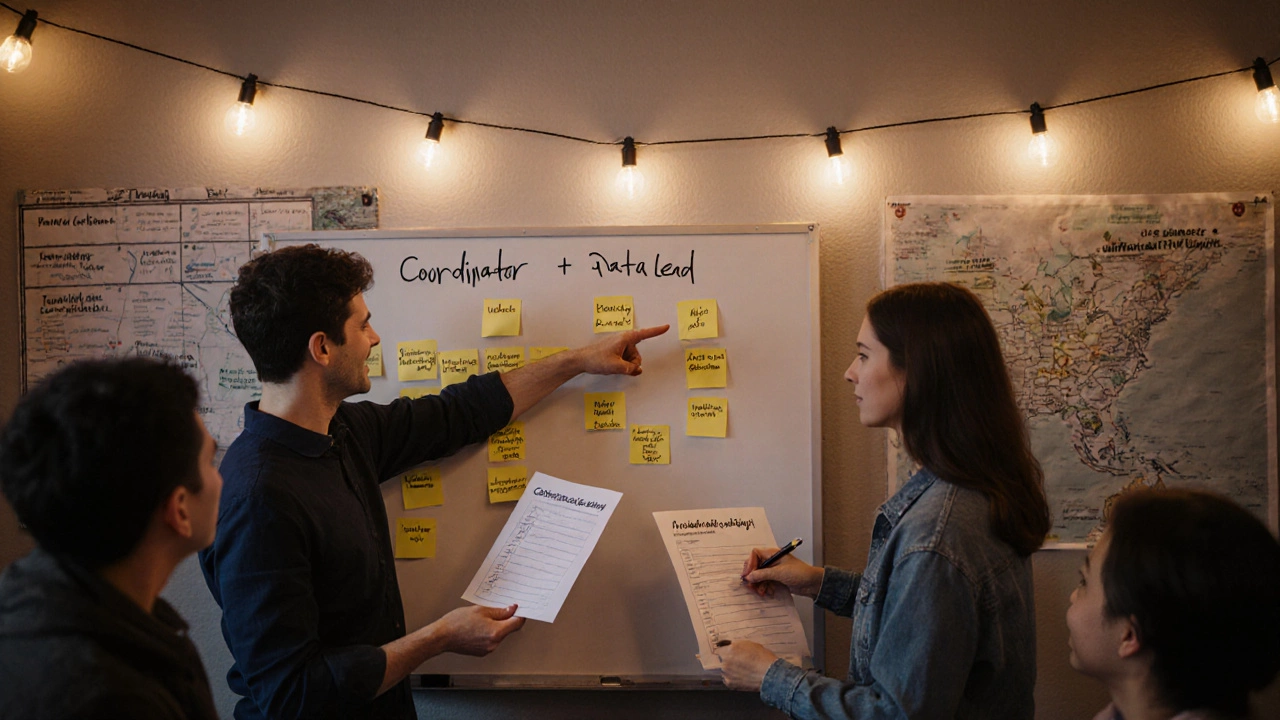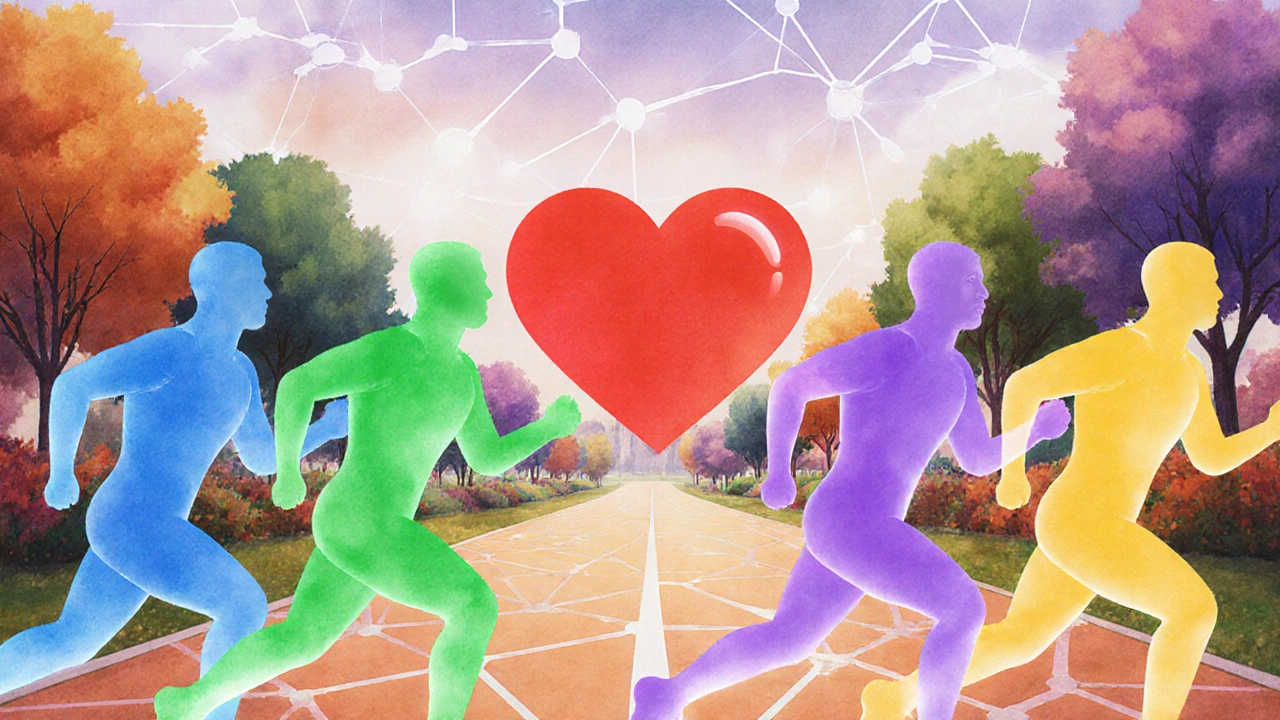Team Role Assignment Calculator
Optimize Your Outreach Team
Based on your team size and goals, we'll recommend the most effective role assignments to maximize impact and prevent burnout.
Outreach Coordinator
Manages scheduling, task tracking, and volunteer coordination. Ensures deadlines are met and workflows stay on track.
Community Liaison
Builds relationships with community members and local leaders. Represents your organization authentically.
Outreach Volunteer
Handles direct community engagement like door-knocking and event support.
Communications Specialist
Creates consistent messaging across all platforms and materials.
Data and Follow-Up Lead
Tracks engagement metrics and manages follow-up communications.
When you think of community outreach, you might picture someone handing out flyers or hosting a food drive. But real outreach isn’t just about showing up-it’s about having the right people in the right spots, doing the right things. Without clear roles, even the best intentions fall apart. Teams get confused. Messages get mixed. Volunteers burn out. And the community? They feel ignored.
Why Roles Matter in Outreach
Outreach isn’t a one-person job. It’s a chain of actions, each needing someone to hold it together. Think of it like a relay race. If one runner drops the baton, the whole team loses. In outreach, that baton could be a phone call, a follow-up email, a door-knock, or a thank-you note. Without defined roles, no one knows who’s responsible for what.
Organizations that assign clear roles see 40% higher volunteer retention and 30% more successful engagements, according to a 2024 study by the National Community Engagement Network. Why? Because people know what’s expected. They feel valued. And they’re not stuck doing tasks that don’t match their skills or interests.
Core Outreach Roles and What They Do
Every outreach team needs at least five key roles. Some people wear multiple hats, especially in smaller groups. But even then, each responsibility should be clearly assigned.
- Outreach Coordinator: This is the person who keeps everything moving. They plan the schedule, track progress, manage volunteers, and make sure deadlines aren’t missed. They don’t need to be the loudest voice-they need to be the most organized. Their job is to turn big ideas into daily tasks.
- Community Liaison: This role is all about trust. The liaison is the face of your organization in the neighborhood. They go to block meetings, talk to local leaders, listen to concerns, and bring feedback back. They’re not there to sell something-they’re there to understand what the community actually needs.
- Outreach Volunteer: These are the boots on the ground. They knock on doors, hand out materials, answer questions at events, and help with sign-ups. Good volunteers don’t need to be experts-they need to be kind, reliable, and willing to learn. Training them well matters more than how many you have.
- Communications Specialist: They handle the messaging. That means writing clear flyers, posting on social media, drafting press releases, and making sure all materials use the same tone and language. If your flyer says “Join us” but your website says “Sign up now,” people get confused. This person fixes that.
- Data and Follow-Up Lead: Most outreach efforts fail here. People get excited about the event, then forget to follow up. This role tracks who showed up, who said yes, who needs a call next week. They update spreadsheets, send thank-you texts, and flag people who need more support. Without this role, your outreach looks like a leaky bucket.
How Roles Fit Together
These roles don’t work in isolation. They’re connected. Here’s how:
- The Community Liaison hears that families in the south side need help with winter heating bills. They tell the Outreach Coordinator.
- The Outreach Coordinator plans a door-knocking campaign and assigns Outreach Volunteers to specific blocks.
- The Communications Specialist creates a simple flyer in Spanish and English, with clear steps on how to apply for aid.
- The Data and Follow-Up Lead records who got the flyer, who asked questions, and who needs a callback.
- Two days later, the Community Liaison calls a local church to see if they can host a sign-up table.
That’s outreach in action. No one person does it all. But together, they move the needle.

Common Mistakes with Outreach Roles
Even good teams mess this up. Here are the top three mistakes:
- One person does everything. You’ve seen it: the same person runs events, answers emails, writes grants, and knocks on doors. They’re exhausted. And when they leave, the program collapses.
- Roles are vague. “Help with outreach” isn’t a job. What does that mean? Are they calling people? Setting up tables? Taking photos? Be specific.
- No training or support. Volunteers aren’t mind readers. If you hand them a stack of flyers and say “Go,” they’ll either do nothing or do it wrong. Give them a 15-minute briefing. Show them sample scripts. Let them practice.
One nonprofit in Milwaukee tried to launch a youth mentorship outreach with just two staff members and 15 volunteers. No one had a defined role. After three months, they had 12 signed-up families-and 8 volunteers quit. They restructured: hired a part-time coordinator, assigned a liaison to each neighborhood, and trained volunteers with role-specific checklists. In the next six months, they signed up 89 families.
How to Assign Roles in Your Team
Starting out? Here’s how to build your outreach team step by step:
- List your goals. What do you want to achieve? Get 100 people to sign up? Raise awareness? Collect donations? Your goals shape your roles.
- Map out the steps. Write down every task needed: research, design, print, distribute, call, record, follow up.
- Match people to tasks. Who’s good at talking to strangers? Who’s detail-oriented? Who has time on weekends? Don’t assign based on who’s “nice”-assign based on who’s good at the task.
- Write a one-page role description. For each role, list: What they do, what tools they need, how often they meet, and who they report to.
- Review and adjust. After two months, sit down with your team. What’s working? What’s frustrating? Change roles if needed. Flexibility beats rigidity.

What If You Don’t Have Enough People?
Small teams can still be effective. You don’t need a big staff. You need clarity.
If you only have three people, combine roles smartly:
- One person: Outreach Coordinator + Data Lead
- One person: Community Liaison + Communications
- One person: Outreach Volunteer (but recruit 5-10 helpers for specific tasks)
Use free tools like Google Sheets for tracking, Canva for flyers, and WhatsApp for quick check-ins. The tech isn’t the problem-it’s the lack of structure.
What Success Looks Like
Success isn’t about how many flyers you handed out. It’s about whether people felt seen.
When a senior citizen calls back because they got the right information about food assistance, that’s success.
When a teenager signs up to volunteer because someone took the time to explain the program, that’s success.
When your local library agrees to host your next event because they trust your team-that’s success.
Clear roles make those moments possible. They turn chaos into consistency. They turn good intentions into real impact.
What’s the difference between an outreach coordinator and a community liaison?
The outreach coordinator manages the process: scheduling, tracking, and organizing tasks. The community liaison builds relationships: they listen, represent your group in local spaces, and bring feedback from the community back to the team. One runs the machine; the other keeps it in tune with real needs.
Can one person handle multiple outreach roles?
Yes, especially in small teams. But don’t let it become a trap. If one person is doing five jobs, they’ll burn out fast. Instead, combine roles wisely-like pairing coordinator with data tracking, or liaison with communications. Always make sure someone else can step in if they’re sick or leave.
Do outreach volunteers need training?
Absolutely. Even simple tasks like handing out flyers need context. Volunteers should know: Why are we doing this? Who are we helping? What should they say if someone asks for help? A 15-minute briefing with role-specific tips prevents mistakes and builds confidence.
How do you know if your outreach roles are working?
Look at two things: outcomes and morale. Are you hitting your goals? Are volunteers showing up consistently? Are people in the community saying your team is helpful? If the answer is yes to both, your roles are working. If not, it’s time to revisit who’s doing what.
What if no one wants to be the data lead?
That’s a common problem. Data work feels invisible. Make it matter. Show people how their tracking led to a family getting help, or a grant being approved. Give them a simple tool-like a free Google Form-and celebrate small wins. Sometimes, just saying “You kept us organized” makes all the difference.
